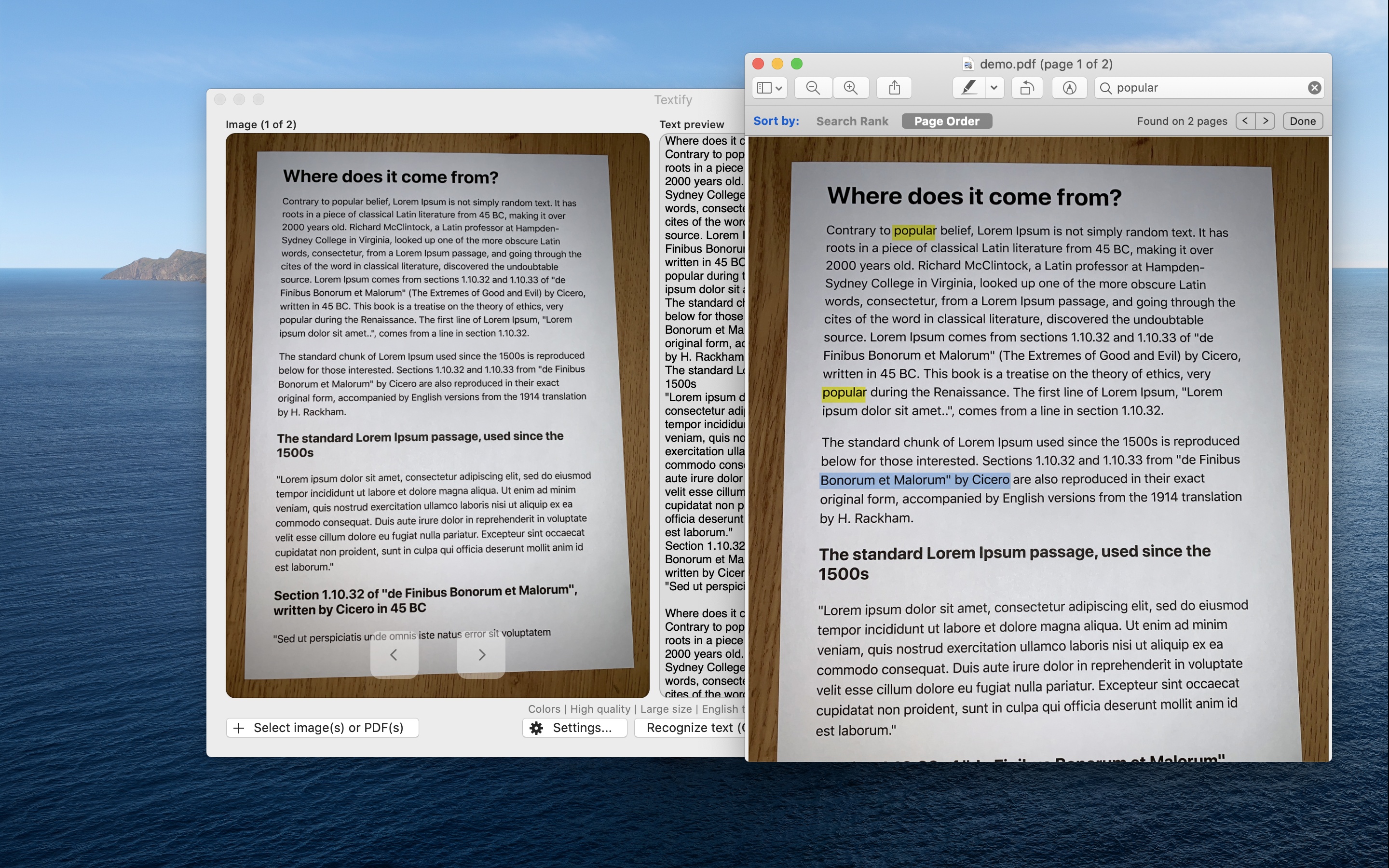
- #Textify any picture install#
- #Textify any picture full#
- #Textify any picture android#
- #Textify any picture software#
#Textify any picture install#
Step 2: Install the emulator on your PC or Mac
#Textify any picture software#
You can download the Bluestacks Pc or Mac software Here >. Most of the tutorials on the web recommends the Bluestacks app and I might be tempted to recommend it too, because you are more likely to easily find solutions online if you have trouble using the Bluestacks application on your computer. If you want to use the application on your computer, first visit the Mac store or Windows AppStore and search for either the Bluestacks app or the Nox App >.
#Textify any picture android#
We want the text in white and we expect the white pixels to be in the minority.Step 1: Download an Android emulator for PC and Mac
#Textify any picture full#
We normalize the result so that pixels use full 255 possible values and then we measure the mean value to create a negative of the image if more pixels are white than black. The last step is not needed but is nevertheless useful. Namely, we use given corners and desired corners of the card and compute a homography matrix which is then used by "Imgproc.warpPerspective" to undo the distortion. For OCR systems this resolution should be somewhere around DPI=300. We do that using known dimensions for a business card plus the desired DPI (dots per inch) resolution. Next we establish desired width and height of the rectified image. First we make a call to a method that should return a list of corners. This is a lot of code but it does several things. If(meanA> 128) Core.bitwise_not(rectified,rectified) Imgproc.warpPerspective(gray,rectified, hh,rectified.size()) Ĭore.normalize(rectified,rectified, 0, 255,Core.NORM_MINMAX,CvType.CV_8UC1) įloat meanA=an(rectified).val

Mat rectified=Mat.zeros(pixelsHigh,pixelsWide,gray.type()) Mat hh=Calib3d.findHomography(srcPts,dstPts) MatOfPoint2f dstPts = new MatOfPoint2f() omArray(toPts) MatOfPoint2f srcPts = new MatOfPoint2f() omArray(fromPts) Public static void main( String.arg) throws IOException getLogger(()).log(Level.SEVERE, null, ex) System.loadLibrary(Core.NATIVE_LIBRARY_NAME) We do this so that both gray and color images are on the same level and to simplify further steps. Our first piece of code is to load the image and to convert it to grayscale. Once the environment is set up we are ready to use OpenCV and Tesseract methods in Java. In the original post you can find detailed instructions on setting up the software environment used in this article/tutorial. The OCR will be treated in the second part. In the first post of this series we will tackle pre-processing of document images using Computer Vision. If content is a table then granularity must be at level of words or letters to be able to extract columns and rows. The finer the granularity the more information about the layout is retained. Depending on the recognition granularity the rectangle can be per letter, per word, per line or per whole page. The output of OCR is a list of rectangles and detected text. The OCR algorithm uses additional computer vision methods to segment foreground into letters and uses pattern matching to decide which letters they are. Such processed image is then fed into OCR. If all goes well the output of pre-processing and also the input to optical character recognition is a cleaned up, monochrome picture where the white foreground is the text we want to extract and everything else is black background.

This includes color transformation, contrast enhancement, noise reduction, rectification and binarization. We use methods developed in computer vision to prepare the picture. The overall process of transforming a picture to text involves two key elements: The contents can be a business card, an invoice or a financial report. In this process the input is a picture of a document, scanned in or taken by a mobile phone. We would like to show you how pictures are transformed into text that can be used for machine learning and more. On the other hand if your job is data entry and if you have a stack of reports full of tables and if all those tables need to be transferred to excel you might prefer the words. They say that a picture is worth a thousand words.


 0 kommentar(er)
0 kommentar(er)
